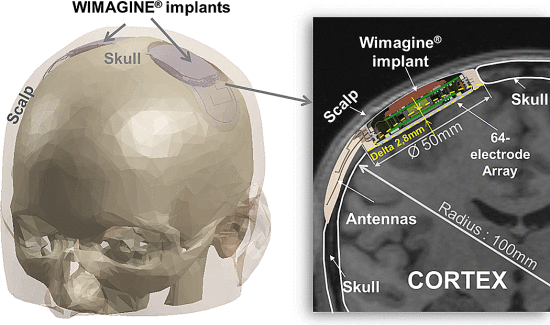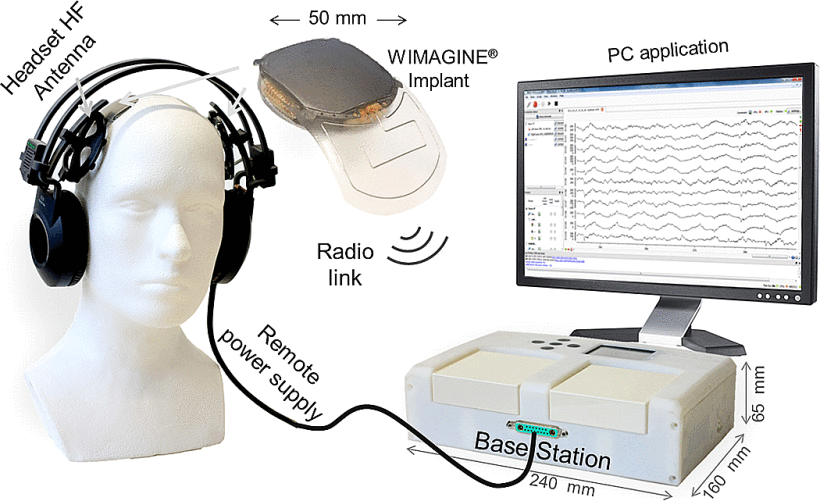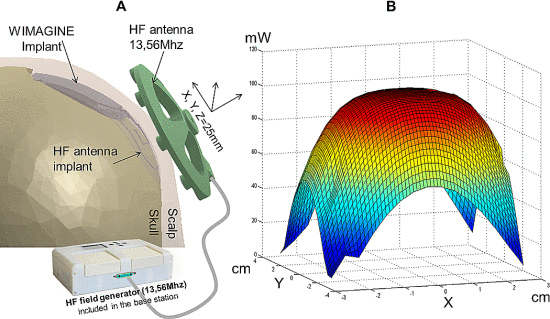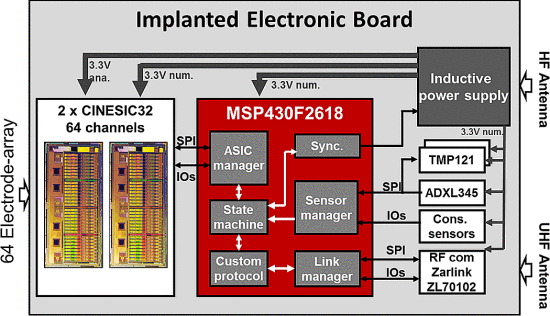The goal of CLINATEC® Brain Computer Interface Project is to improve tetraplegic subjects’ quality of life by allowing them to interact with their environment through the control of effectors with multiple degrees of freedom after training.

The device was implanted in two quadriplegic patients within the context of a Brain-Computer Interface (BCI) protocol. This study focused on the ECoG signal quality and stability in two patients bilaterally implanted in June 2017 (P1) and in November 2019 (P2).
Based on temporal linear regressions, Christelle Larzabal and colleagues from CEA LETI and Grenoble's CHU, report a limited decrease of the strength and signal-on-noise, which is of great interest for long-term clinical applications.
These findings are relevant for the future of implantable BCIs, and could benefit other patients with spinal cord injury, Amyotrophic Lateral Sclerosis, neuromuscular diseases or drug-resistant epilepsy.

The subject should be able to control a 4-limb exoskeleton EMY (Enhancing MobilitY). The ECoG signals from the subject’s brain will be recorded and wirelessly transmitted to a base station by the WIMAGINE® implant.
This implant is composed of an array of 64 biocompatible electrodes, a hermetic titanium case which houses electronic boards, biocompatible antennas for wireless transmission of the data, and a remote power supply.
The device is powered remotely through an inductive link at 13.56 MHz which provides up to 100 mW.

Innovative ECoG signal decoding algorithms will allow self-paced control of the exoskeleton by decoding the subject’s brain activity. The neuronal signal processing approach is based on a tensor data analysis. It allows simultaneous treatment of the signal in several domains, (frequency, temporal, and spatial).
The neural activity is recorded on 64 electrodes with selectable gain and sampling frequency, with less than 1 μV(RMS) input referred noise in the [0.5 Hz - 300 Hz] band.

The digitized data is transmitted wirelessly to a custom designed base station connected to a PC. The hermetic housing and the antennae have been designed and optimized to ease the surgery. The design of this implant takes into account all the requirements of a clinical trial, in particular safety, reliability, and compliance with the regulations applicable to class III AIMD.

